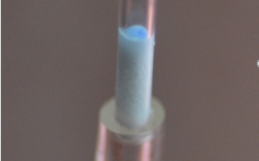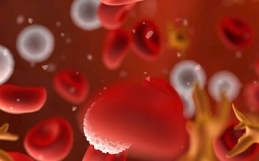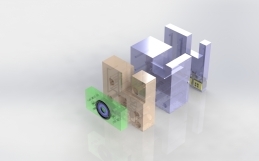Targeting a major area of need in the global fight against HIV/AIDS, Wave 80 and Siemens Medical Solutions Diagnostics today announced the beginning of a new research initiative focused on technologies to complement pharmaceutical strategies for helping patients diagnosed with HIV lead longer, more productive lives.
The program aims to develop new techniques for determining the amount of the virus in a patient’s bloodstream, a parameter known as viral load. Along with CD4+ T cell count, viral load is a key parameter considered by physicians to assess prognosis of disease progression, and to evaluate patient response to antiretroviral therapy. The increasing availability of antiretroviral drugs in developing countries holds great promise for improving the overall quality of HIV/AIDS care globally, but amplifies the need for viral load measurement technologies to ensure that patients realize maximum benefit from available medications.
To overcome longstanding barriers to the development of viral load measurement tools suitable for use in resource-limited settings, the Wave 80-Siemens program will build on Siemens’ powerful VERSANT® signal amplification-based nucleic acid quantification method, a high-precision method which avoids errors introduced by extraction and replication of target sequences during target amplification-based nucleic acid methods. The new program will also leverage Wave 80’s EOSCAPE technology, a groundbreaking technology for high-temporal-resolution, fully active transport of samples and reagents within disposable bioprocessing cartridges, along with other Wave 80 high-performance assay methods.
Specifically targeted by the new research initiative are four longstanding technical barriers to the development of viral load measurement instruments for resource-limited settings: turnaround time, detection limit, susceptibility to contamination, and cost. Viral load instruments ultimately developed under the program will be battery powered and highly portable, having a form factor similar to ultraminiature diagnostic instruments previously developed by Wave 80 (typically 6” long x 2” in diameter and weighing approximately ten ounces). The new viral load instruments will be robust, low cost, and produce patient data appropriate for guiding antiretroviral therapy in resource-limited settings.
The new initiative formalizes a loose Wave 80-Siemens collaboration begun in 2006 with the division of Bayer AG that was acquired by Siemens Medical Solutions Diagnostics earlier this year. Also involved in the project are researchers with the International AIDS Vaccine Initiative, based in New York City. The research effort will be funded by National Institute of Allergy and Infectious Disease, with additional funding from Wave 80 and Siemens.
About Siemens.
Siemens Medical Solutions Diagnostics offers a broad portfolio of performance-driven diagnostic solutions that assist in the diagnosis, monitoring and management of disease. The company’s products and services bring together the right balance of science, technology, and practicality across the healthcare continuum to empower medical professionals with the vital information they need to deliver better, more personalized healthcare to patients around the globe. Visit www.siemens.com/diagnostics.
Siemens Medical Solutions of Siemens AG (NYSE: SI) is one of the world’s largest suppliers to the healthcare industry. The company is known for bringing together innovative medical technologies, healthcare information systems, management consulting, and support services, to help customers achieve tangible, sustainable, clinical and financial outcomes. Recent acquisitions in the area of in-vitro diagnostics – such as Diagnostic Products Corporation and Bayer Diagnostics – mark a significant milestone for Siemens as it becomes the first full service diagnostics company. Employing more than 41,000 people worldwide and operating in over 130 countries, Siemens Medical Solutions reported sales of 8.23 billion EUR, orders of 9.33 billion EUR and group profit of 1.06 billion EUR for fiscal 2006 (Sept. 30). Further information can be found by visiting www.usa.siemens.com/medical-pressroom.



